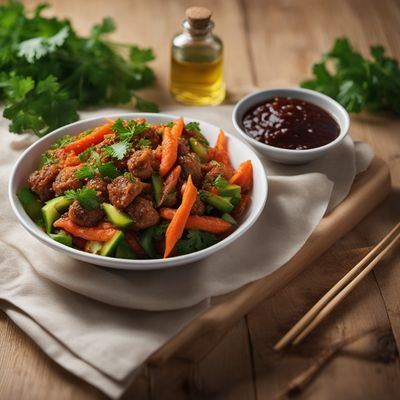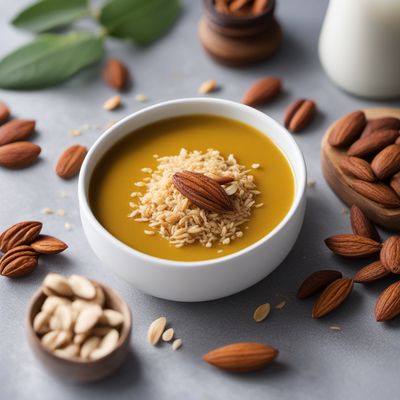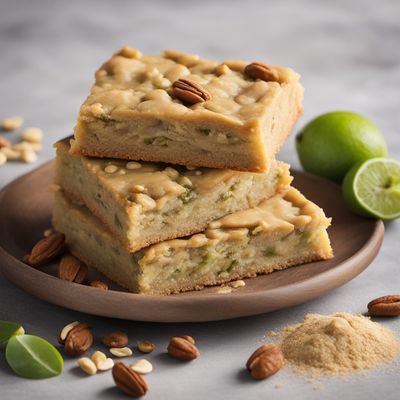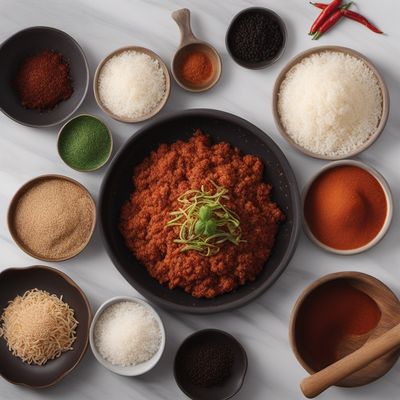
Cuisine
Fusion cuisine
Fusion cuisine is characterized by its use of unexpected flavor combinations and its willingness to experiment with different ingredients and cooking techniques. It often combines elements of different culinary traditions, such as Asian and European, to create new and innovative dishes. Fusion cuisine is also known for its focus on creativity and experimentation, with many chefs and restaurants pushing the boundaries of traditional cooking.
Typical ingredients
Soy sauce, Ginger, Garlic, Lemongrass, Coconut milk, Curry paste, Miso, Wasabi, Balsamic vinegar, Truffle oil
Presentation and garnishing
Presentation of fusion cuisine is often modern and innovative, with an emphasis on bold colors and unexpected textures. Garnishes may include edible flowers, microgreens, or molecular gastronomy techniques such as foams or gels. Plating may be done on modern materials such as slate or glass.
Fusion cuisine is a celebration of the global nature of modern cuisine, and a testament to the creativity and experimentation of chefs and restaurants around the world. Many of the ingredients used in fusion cuisine are unique and unexpected, and are prized for their bold and innovative flavors.
More cuisines from this region...
Italian-American cuisine, Mexican-American cuisine, New American cuisine, Chinese American cuisine, Filipino-American cuisine, Greek-American cuisine
History
The history of fusion cuisine can be traced back to the 1970s, when chefs began experimenting with different culinary traditions and ingredients. The trend gained popularity in the 1980s and 1990s, and has since become a staple of modern cuisine. Today, fusion cuisine is found in restaurants around the world, and is known for its bold, unexpected flavors and its focus on creativity and experimentation.
Cultural significance
Fusion cuisine is a celebration of creativity and experimentation in the kitchen. It is a reflection of the global nature of modern cuisine, and a testament to the willingness of chefs and restaurants to push the boundaries of traditional cooking. Fusion cuisine is also a popular tourist attraction, with many visitors coming to restaurants specifically to sample the innovative and unexpected flavors.
Health benefits and considerations
Fusion cuisine can be both healthy and unhealthy, depending on the ingredients and cooking techniques used. Many fusion dishes incorporate healthy ingredients such as vegetables and lean proteins, but may also be high in sodium or fat if prepared with rich sauces or oils. However, fusion cuisine is also known for its focus on creativity and experimentation, which can lead to new and innovative ways of preparing healthy foods.
Fusion cuisine recipes Browse all »

Fusion Krapci with a Twist
Crispy Dumplings with a Fusion Flair

Parzybroda Fusion Delight
Savory Fusion Medley: Parzybroda with a Twist

Amaretti Fusion Delight
Almond-infused Fusion Cookies

Chouquette Fusion Delight
Fluffy French Chouquettes with a Fusion Twist

Fusion Ham in a Ring
Savory Ham and Cheese Ring with a Twist

Fusion Spollichini in Bisaccia
East Meets West: A Fusion Twist on Spollichini in Bisaccia

Fusion Magaj Delight
Spiced Almond and Coconut Fusion Delight

Nozawana Fusion Salad
Umami Explosion: Nozawana Fusion Salad

Spicy Fusion Pizza
Fiery Fusion Delight: Spicy Pizza with a Twist

Chikanda Fusion Delight
Spiced Yam and Peanut Fritters with a Twist

Fusion Blondie Delight
Blissful Fusion Blondie: A Harmonious Blend of American and Global Flavors

Fusion Rengginang with a Twist
Crispy Rice Crackers with a Fusion Flair